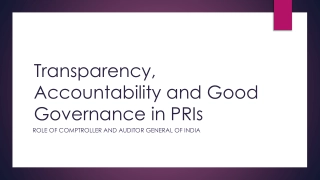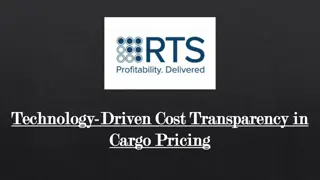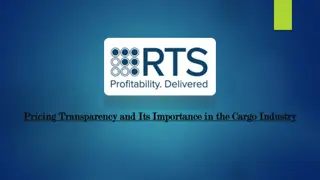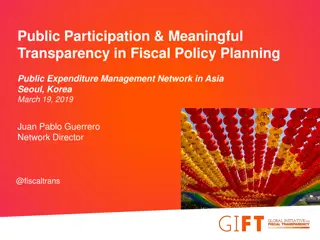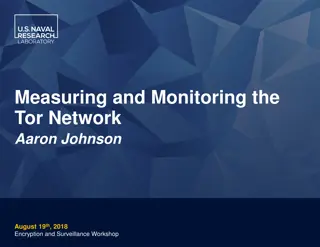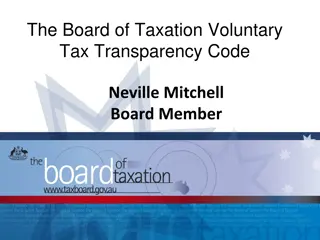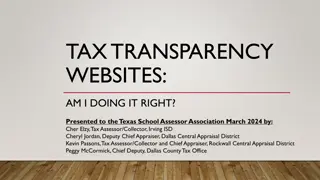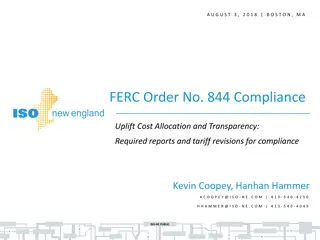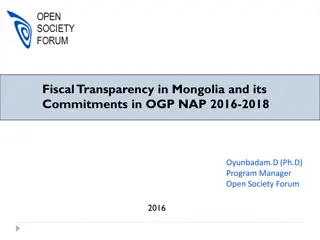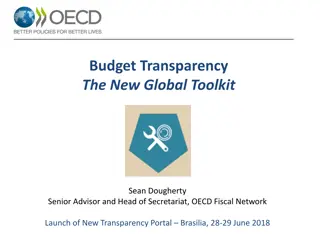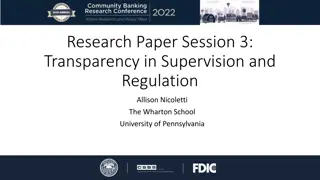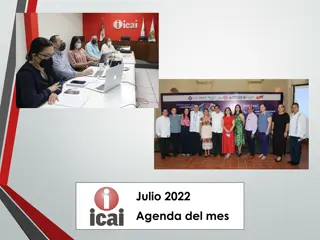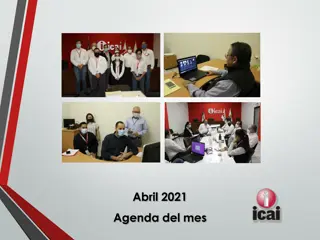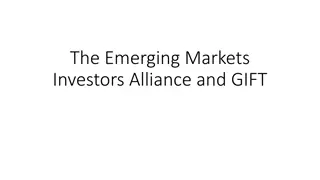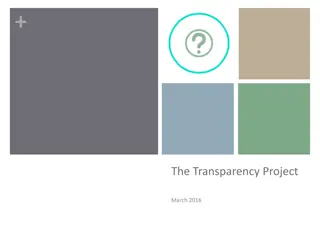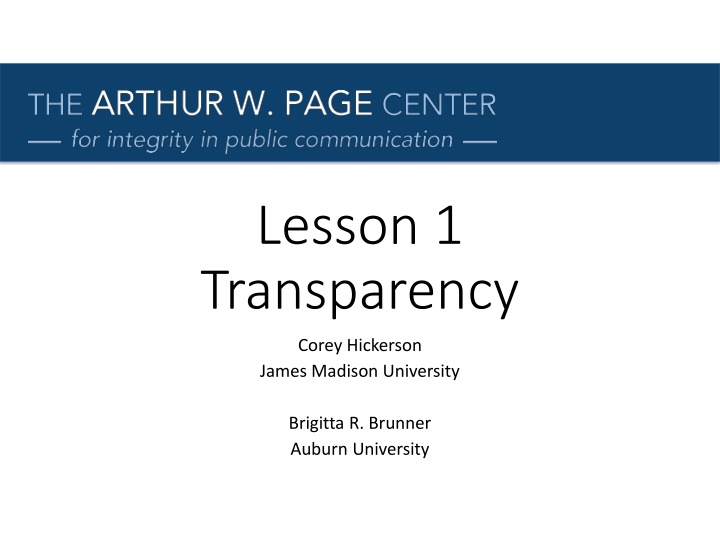
Transparency in Communication
Learn about the importance of transparency in communication, different types of deceptive transparency, such as pseudotransparency and asynchronous transparency, and the concepts of disclosure, full disclosure, and limited disclosure in fostering trust and accountability within organizations.
Download Presentation

Please find below an Image/Link to download the presentation.
The content on the website is provided AS IS for your information and personal use only. It may not be sold, licensed, or shared on other websites without obtaining consent from the author. If you encounter any issues during the download, it is possible that the publisher has removed the file from their server.
You are allowed to download the files provided on this website for personal or commercial use, subject to the condition that they are used lawfully. All files are the property of their respective owners.
The content on the website is provided AS IS for your information and personal use only. It may not be sold, licensed, or shared on other websites without obtaining consent from the author.
E N D
Presentation Transcript
Lesson 1 Transparency Corey Hickerson James Madison University Brigitta R. Brunner Auburn University
Lesson One | Introduction What is Transparency Transparency is open and honest communication (ethicsinpr). It has three purposes To provide information to publics To increase participation To hold organizations accountable (Balkin, 1999). Transparency affects trust.
Lesson One | Introduction Types of Deceptive Transparency Pseudotransparency Pseudotransparency is involuntary (Kruckeberg, 2014). It creates mistrust. An employee forced to like the employer s Facebook page. This action is disingenuous.
Lesson One | Introduction Types of Deceptive Transparency Asynchronous Transparency Asynchronous transparency occurs between an organization and public The public demands transparency of the organization, but is less than honest about its motives and actions (Zuk, 2014). People making false claims about products on social media. People using fake names in comments thereby making it impossible for organizations to respond.
Lesson One | Introduction Disclosure Disclosure is the intentional release of information to facilitate transparency, openness, access, and accountability (Lukaszewski, 2014). Disclosure is about frankness.
Lesson One | Introduction Full Disclosure Full disclosure is an attempt to make available all legally releasable information in a timely, accurate, and balanced manner (Rawlins, 2008). It keeps organizations accountable for their actions, policies, and practices (Rawlins, 2008). When a blogger who is reviewing a product lets readers know he was compensated and/or received the product to review he is practicing full disclosure. Full disclosure is the opposite of secrecy.
Lesson One | Introduction Limited Disclosure Limited disclosure happens when there is a situation where not all information can be released. There are times when PR practitioners cannot say some things to anyone. Sharing the secret formula for a product. Releasing an employees annual evaluation materials.
Lesson One | Introduction Goals of Transparency and Disclosure Transparency and disclosure require honesty and accuracy. PR practitioners should never Hide information Mislead Deceive Purposively omit information
Lesson One | Introduction Two-Way Communication Two-way communication involves a message sender and message receiver and adds a feedback loop. Transparency and disclosure are two-way communication. They both require a practitioner to send a message and to then listen to his public s response. By listening, the practitioner can adjust his message and response to meet the public s needs.
Lesson One | Introduction Two-Way Communication Transparency and disclosure build authenticity and trust through two-way communication (Kruckeberg, 2014). Disclosure and transparency can help build positive and mutually beneficial organization-public relationships. Publics are informed, Publics can consent to actions taken because they are informed.
Lesson One | Introduction Discussion Questions Discussion Questions Can you think of an organization that weathered a crisis well because it was transparent with its publics? What about an organization that hid or omitted information and ultimately was damaged by these deceptive practices? If you were interning for a company and someone called asking you to provide information about an employee such as the employee's address, employment status, and what you thought managers might say about the employee how would you respond? Why? Have you ever been in a situation where you were asked to engage in pseudotransparency? Could anything have been done differently to make the situation less deceptive?
Lesson One | Introduction Discussion Questions Discussion Questions Which of the Page Principles do you believe are most important to enhancing transparency? Why? What is most important to transparency truth, accuracy, or honesty? What about to disclosure? Why is two-way communication important to transparency and disclosure? Could one-way communication ever be appropriate in a situation involving transparency and/or disclosure?
Lesson One | Introduction References Balkin, Jack M., "How Mass Media Simulate Political Transparency" (1999). Faculty Scholarship Series. Paper 259. Retrieved from: http://digitalcommons.law.yale.edu/fss_papers/259 Ethicsinpr (n.d.). Retrieved from https://ethicsinpr.wikispaces.com/Transparency Kruckeberg, D. (2014, August). Transparency and its vulnerabilities: trust must be the public relations goal of governments, civil society organizations and corporations. Retrieved from https://www.ipra.org/news/itle/transparency-and-its-vulnerabilities-trust-must-be-the-public- relations-goal-of-governments-civil-society-organizations-and-corporations/ Lukaszewski, J. (2014, Sept. 24). Disclosure and candor: The two most powerful ingredients of trust. PRSAY. Retrieved from http://prsay.prsa.org/2014/09/24/disclosure-candor-the-two-most- powerful-ingredients-of-trust/ Rawlins, B. (2008). Measuring the relationship between organizational transparency and employee trust. Public Relations Journal, 2, 1-21. Zuk, R. (2011, September 14). The new network: Authenticity, anonymity and the digital divide. Retrieved from http://www.prsa.org/intelligence/tactics/articles/view/9393/1035/the_new_network_authentic ity_anonymity_and_the_dig#.WFAb26KCP4k

